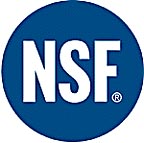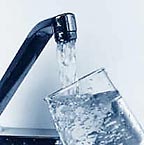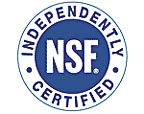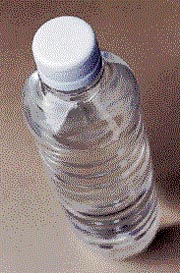

Beginning the Process
Gaining NSF/ANSI status is completely voluntary. To be NSF-certified, the drinking water treatment unit (DWTU) manufacturer must apply for certification by submitting a request for cost estimate form and an application. During the application process, the manufacturer presents a list of claims to be verified. For example, if a DWTU is said to remove chlorine, taste, odor and lead from drinking water, the system will be evaluated based on that list of claims.In order to be certified, each DWTU must undergo product evaluation. Reviewed in four categories, it must meet NSF criteria in the following areas:
Structural integrity — This step determines the system’s ability to withstand extended periods of use.
Material evaluation — This section includes a review of the formulations used to produce the materials in contact with the drinking water as well as a system-wide extraction test to verify no contaminants are introduced into the water by the treatment system.
Contaminant-reduction testing — This stage evaluates the system according to the methodology and criteria of the standard based upon the list of claims requested.
Literature review — This phase involves the review and acceptance of all product literature, including operation manuals, packaging and performance data sheets.
Program Standards
There are six NSF/ANSI standards for point-of-use and point-of-entry drinking water treatment units:NSF/ANSI 42: Drinking water treatment units - Aesthetic effects — evaluates systems in terms of specific aesthetic claims (non-health related contaminants), such as chlorine, taste and odor.
NSF/ANSI 44: Cation exchange water softeners — covers water softeners designed to reduce water hardness. This standard also may test for the reduction of barium and radium.
NSF/ANSI 53: Drinking water treatment units - Health effects — certifies systems designed to reduce specific health-related contaminants, such as lead, volatile organic compounds and the gasoline additive MTBE.
NSF/ANSI 55: Ultraviolet microbiological water treatment systems — qualifies UV treatment systems in two classes:
- Class A systems are designed to disinfect and/or remove microorganisms from contaminated water, including bacteria and viruses, to a safe level.
- Class B systems are designed for supplemental bactericidal treatment of public drinking water or other drinking water, which has been deemed acceptable by a local health agency.
NSF/ANSI 58: Reverse osmosis drinking water treatment systems — certifies reverse osmosis systems and covers contaminant-reduction claims, including fluoride, hexavalent and trivalent chromium, total dissolved solids, nitrates, etc.
NSF/ANSI 62: Drinking water distillation systems — covers distillation systems designed to reduce specific chemical contaminants, such as mercury, nitrate/nitrite and arsenic, and microorganisms.

Audit and Certification
After the DWTU has met the requirements of the applicable standard(s), an audit of the production facility and manufacturing process also must be completed. Following the initial certification, an annual audit of the drinking water treatment unit is administered. Then, five years after certification, there is a recertification program to ensure the product remains in compliance with the requirements of the applicable standard(s).All NSF-certified products are required to bear the NSF mark. Certified water treatment units will bear a laminated foil mark with identifying information, or it must bear a legible, authorized facsimile of the mark with appropriate manufacturer information. Components, too, may be NSF-certified, however, they must meet only material evaluation and possibly structural integrity requirements.


Report Abusive Comment